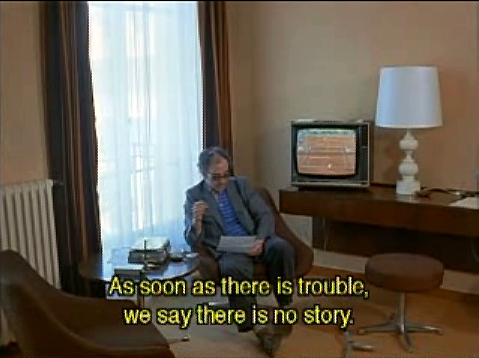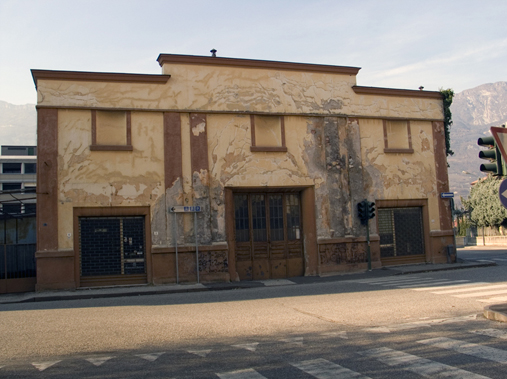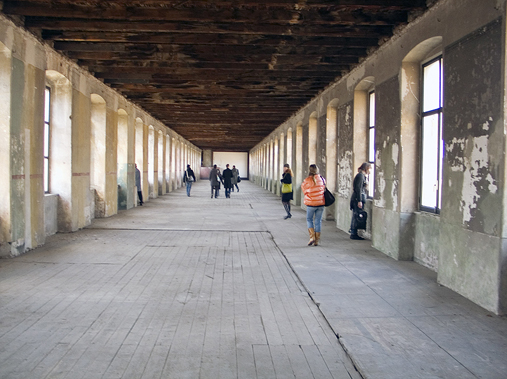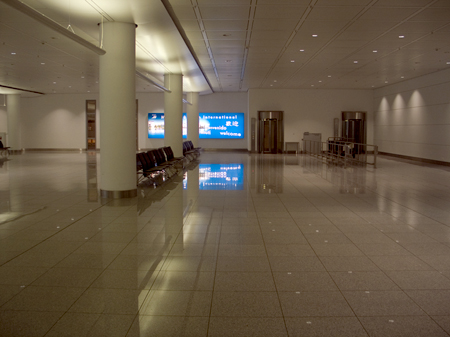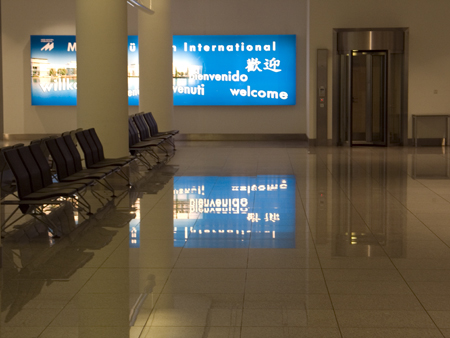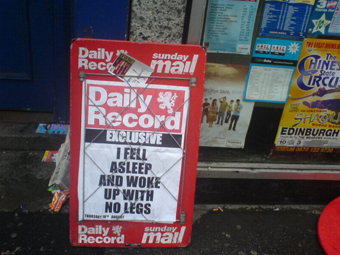In which the day is fragmented entirely from dawn to dusk, to the point where nothing can be done with any of it. The dazed twenty minutes at home after waking and before leaving the house, the fifteen minutes walking to and then waiting for the bus, the ten minutes on the bus, then fifteen minutes waiting for the train. The journey itself – a bare hour of stopping-sevice, interrupted by two ticket inspections, plus your constant moving up and down so that other people can get on/off and in any case distracted by the fact that train is way too crowded, you’re hardly awake. Eventual arrival at an airport, the ten minute walk thru the terminal to check-in, the ten minute wait in line at check-in machine and then another fifteen at bag drop, the five minute walk to passport control and security, the further and much longer wait there, the more-or-less eventual ‘arrival’ at the top of the snaking security line, the depressing removal of objects from pockets and laptop from bag, the taking off of shoes and the transportation of all these things thru the magic security portal, the five minutes spent relocating all these bits and putting them back in the places where they were before. The walk towards the gates. Various pointless bits of extra or recreational waiting – to get a coffee, to buy some sticking-plasters, to buy something to read – then some pointless hanging around looking for wifi, and then waiting around for the gate to be announced, then a walk to the gate, a sit down and then a trip to the toilet and then some further pointless waiting stood in a line at the gate itself, in order to gain entry to the plane (higher seat numbers boarding first), and then – the non-surprise surprise – some further waiting just below the gate, now on a large grey bus into which everyone is packed, followed by its circuitous and slow driving to the plane itself, lumbering through fog or rain or brilliant sunshine or whatever’s on offer that day, then further waiting on the tarmac stood in line to file up the temporary steps and onto the plane, stowing your stuff, seating, belting, waiting for the safety demonstration, the taxi and take off. And on and on and on and on and on, and all in small chunks of utterly useless time, thru a long and endlessly fractured wait for a plane change in some other city, the entire boarding and disembarcation procedure repeated, eventual arrival and a taxi ride in the darkness of an invisible city to a hotel whose name you have forgotten as soon as you’ve checked in.
I don’t think I can do justice to it though, really. To the deadening core of it; the day’s hours passing in dried, sliced and dried form, each chunk of time you earn too small to do anything with – a distracted conversation by mobile phone, three snatched and unfocused pages of the book you were trying to read, two paragraphs of an email before the seatbelt light comes on and you have to shut-down. At a certain point – perhaps as the aeroplane dawdles with violent aimlessness around the runways in Frankfurt to the sound of its muzak ballads and banshee funereal jet-engines, you even try ‘thinking’, hoping to at least cross some mental ‘to-be-dones’ off your list in this cramped, ponderous no-man’s land. But even the thinking stalls, looping round, as you’re waiting for the announcements to finish or as you’re waiting for the baggage to crawl round in circles towards you on the slow-motion conveyor belt thing, your whole psyche sinking systematically through the day, down towards a nirvana of florescent-lit half-sleep, locked in your own skull and falling, in an eternal fucking delirium of motion stasis.
